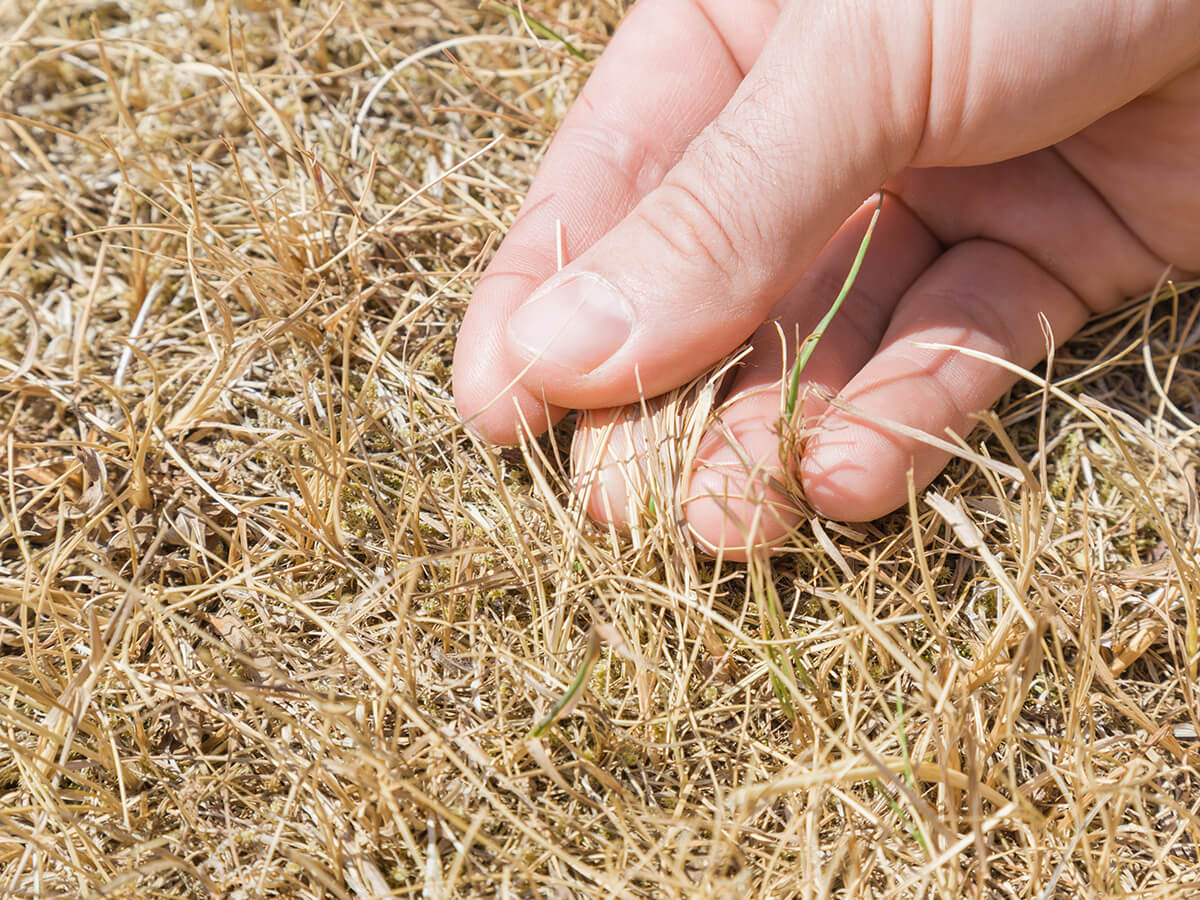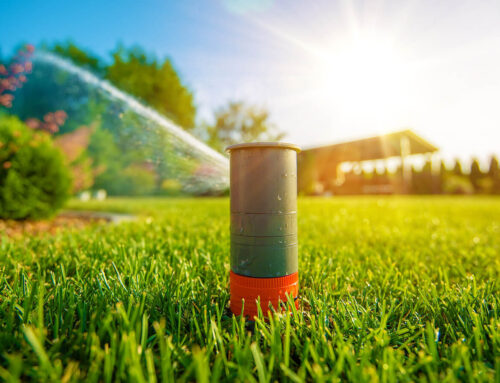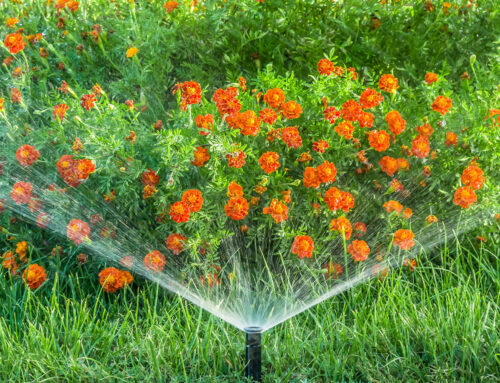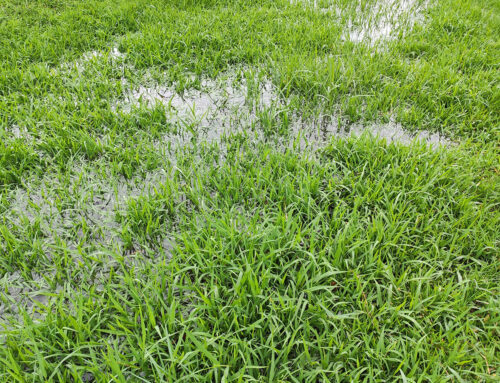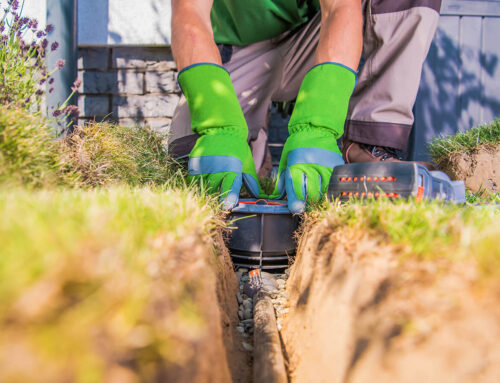A healthy lawn needs the right balance of water to stay lush and vibrant. Too little moisture can leave your grass looking dull, brittle, and patchy. According to a study, unshaded urban lawns require 40% more water than recommended, while shaded lawns mostly follow ideal watering ranges (Litvak et al., 2016).
Understanding the signs of under-watering can help you adjust your irrigation routine and keep your lawn thriving.
Grass Turning Blue-Green or Gray
One of the first signs of an under-watered lawn is a noticeable change in colour. Instead of a rich, vibrant green, the grass may appear dull, with a blue-green or grayish tint. This shift happens as the blades lose moisture, making it harder for them to reflect light properly.
Unlike seasonal browning, which occurs naturally in colder months, this colour change is an early warning of drought stress. If your lawn starts looking faded despite regular mowing and care, it may be time to adjust your watering routine to prevent further dehydration.
Footprints Stay Visible Longer

Healthy grass has enough moisture to maintain its shape and bounce back quickly after being stepped on. However, when a lawn is under-watered, the blades will lose their flexibility, causing footprints or mower tracks to linger for longer than usual. This happens because the grass lacks the water pressure (turgor) needed to support its structure.
A simple way to test your lawn’s hydration is to walk across it and check how long your footprints remain. If the blades stay pressed down instead of springing back within a few seconds, your lawn is likely thirsty and in need of deep watering.
Dry and Brittle Grass Blades
Healthy grass should feel soft and pliable when touched, but under-watered blades become dry, stiff, and brittle. As moisture levels drop, the grass loses its flexibility, making it more prone to breakage under foot traffic or mowing.
A simple way to check for this is by running your fingers through the blades. If they feel rough, snap easily, or crumble between your fingers, your lawn is likely dehydrated. Regular deep watering can help restore moisture and prevent further damage, keeping your grass resilient against drought stress.
Slow Growth and Thinning Patches
A well-hydrated lawn grows steadily, requiring regular mowing to maintain its appearance. However, when grass doesn’t get enough water, its growth slows significantly. You may notice that you need to mow less often, or that certain areas appear thinner and weaker over time.
Without sufficient moisture, grassroots struggle to develop, leading to patchy or uneven coverage. In severe cases, dry spots may become more susceptible to weeds, which thrive in stressed lawns. If your lawn is growing noticeably slower and developing bare patches, increasing deep watering sessions can help restore its density and strength.
Soil Hardness and Cracking
When a lawn lacks sufficient moisture, the soil beneath it becomes compacted and hard, making it difficult for water and nutrients to reach the roots. In extreme cases, dry soil may develop visible cracks, signalling severe dehydration. This not only weakens the grass but also prevents new growth from establishing properly.
A simple way to test soil moisture is with a screwdriver or garden trowel. If it’s difficult to push into the ground, the soil is too dry and compacted. Regular deep watering and occasional aeration can help loosen the soil, improving water absorption and keeping your lawn healthy.
How Weather Affects Lawn Hydration in Canada
Canada’s diverse climate plays a major role in lawn hydration, with different regions experiencing unique challenges in maintaining healthy grass. Understanding how weather patterns impact moisture levels can help homeowners adjust their watering routines effectively.
- Hot Summers and Low Rainfall – Many areas, especially in the Prairies and southern Ontario, face extended dry spells during summer, increasing the risk of under-watering.
- Soil Type and Water Retention – Sandy soils will drain quickly and dry out faster, while clay-heavy soils will hold moisture longer but can become compacted.
- Sun Exposure vs. Shade – Lawns that receive full sun exposure will lose moisture faster than shaded areas, requiring more frequent watering to prevent dehydration.
- Seasonal Adjustments – Watering needs will change throughout the year. Spring and fall typically require less frequent watering, while summer demands more consistent hydration to prevent drought stress.
Watering Best Practices to Prevent Under-Watering
Giving your lawn the right amount of water at the right time is essential for keeping it healthy and resilient. Following these best practices can help prevent under-watering and ensure deep, strong root growth.
- Water Deeply, Not Frequently – Instead of shallow daily watering, aim for deep watering sessions two to three times per week. This encourages roots to grow deeper, making the lawn more drought-resistant.
- Use a Soaker Hose or Slow-Release Sprinkler – These will allow water to penetrate gradually rather than running off the surface.
- Water in Cycles – If your soil has trouble absorbing water, try splitting watering sessions into two rounds (e.g., 10 minutes apart) to let moisture soak in.
- Aim for 1 to 1.5 Inches of Water Per Week – Place a rain gauge or a shallow container on your lawn while watering to measure how much water is applied.
- Check Soil Penetration – Use a screwdriver or trowel to see if water has reached at least 6 inches deep. If not, extend watering time.
- Early Morning Watering – Watering in the early morning allows moisture to soak into the soil before the sun evaporates it. Evening watering can lead to fungal growth due to prolonged dampness.
- Adjust for Weather Conditions – During hot, dry periods, increase watering frequency slightly. If there’s been sufficient rainfall, reduce watering to avoid oversaturation.
- Use Efficient Irrigation Methods – Sprinklers with adjustable settings or drip irrigation systems help distribute water evenly and prevent runoff. Smart irrigation controllers can also optimize watering schedules based on weather conditions.
The Role of Professional Lawn Care Services
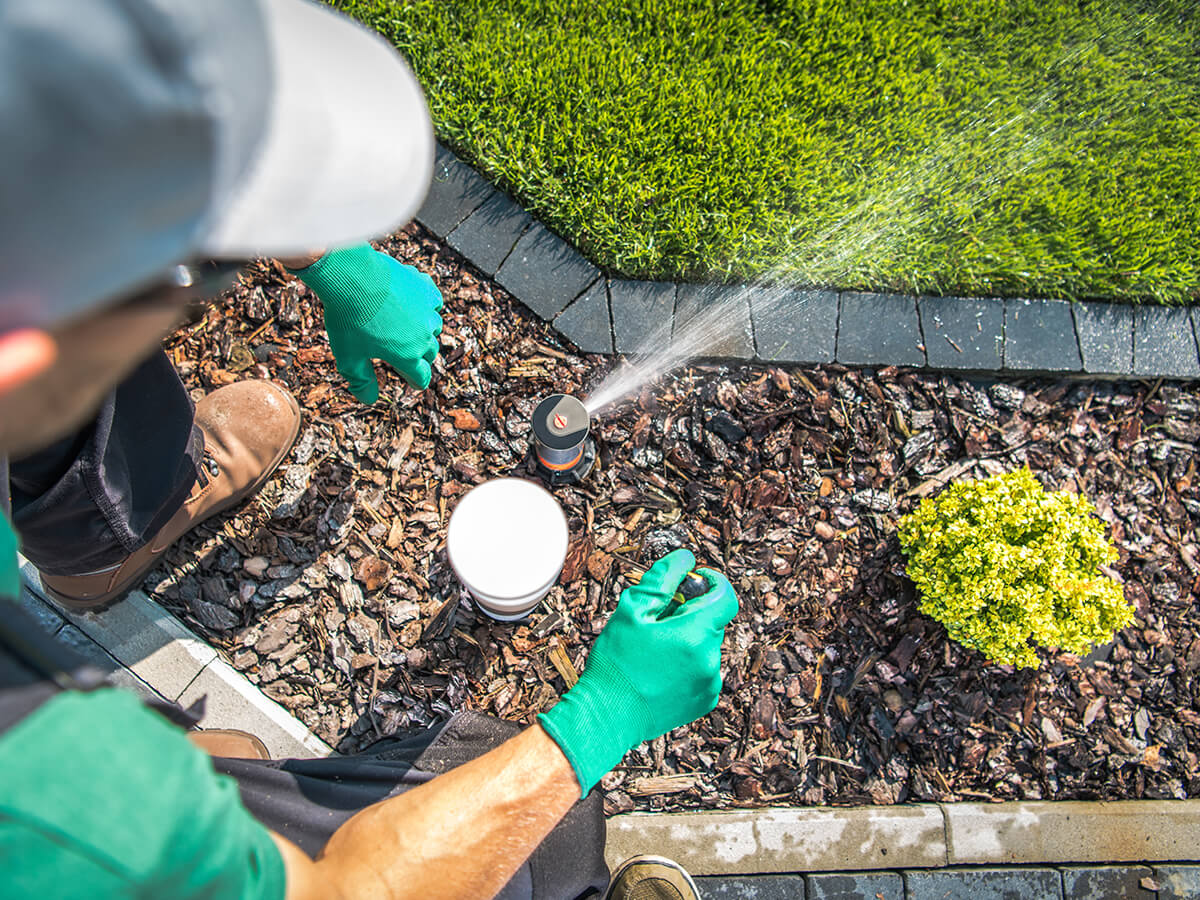
The-Role-of-Professional-Lawn-Care-Services
Keeping a lawn properly hydrated takes time, effort, and the right approach. While homeowners can follow best practices, professional lawn care services offer expertise and specialized tools that ensure consistent, deep watering without waste.
- Customized Watering Plans – Lawn care professionals will assess factors such as soil type, grass species, and local climate conditions to develop a watering schedule tailored to your lawn’s needs. This prevents both under-watering and overwatering.
- Irrigation System Installation & Maintenance – Efficient watering depends on the right irrigation setup. Experts can install and maintain systems like your sprinklers and drip irrigation in Toronto, which delivers water directly to the roots while reducing runoff and evaporation.
- Aeration & Soil Conditioning – Compacted soil prevents water from reaching deep roots. Professional aeration services will improve absorption; ensuring water penetrates effectively for healthier growth.
- Drought Stress Monitoring – Lawn care specialists can identify early signs of dehydration, such as discolouration and thinning patches, and can provide timely treatments to restore moisture balance.
- Fertilization & Lawn Health – Proper hydration works best when combined with nutrient-rich soil. Professionals can offer fertilization services that help grass retain moisture and resist drought stress more effectively.
Choosing the Right Lawn Care Company for Lasting Results
Not all lawn care companies offer the same level of expertise and service. Choosing the right provider ensures your lawn gets the best care without wasting time or money. Here’s what to look for when selecting a lawn care company.
- Experience and Reputation
A company with years of experience and positive customer reviews is more likely to deliver quality results. Look for businesses that specialize in lawn hydration, soil health, and irrigation solutions. Checking online reviews and asking for references can help gauge reliability.
- Range of Services
A good lawn care provider should offer more than just mowing. Look for services like aeration, soil testing, irrigation system installation, and seasonal lawn maintenance. Companies that provide water-efficient solutions can help you maintain a healthy lawn while conserving water.
- Knowledge of Local Conditions
Canadian lawns can face unique challenges due to varying weather patterns. A company familiar with local soil types and climate conditions will be better equipped to create a customized watering and care plan that suits your lawn’s specific needs.
- Eco-Friendly Practices
The best lawn care companies use environmentally responsible products and techniques. Organic fertilizers, water-efficient irrigation, and proper aeration methods contribute to a healthy lawn without harming the environment.
- Transparent Pricing and Service Plans
Look for a company that provides clear pricing, no hidden fees, and flexible service plans. Some offer seasonal packages that ensure your lawn gets the right care throughout the year.
Keep Your Lawn Hydrated and Healthy
A well-watered lawn isn’t just about appearance – it’s essential for strong, resilient grass. Recognizing the signs of under-watering and following proper watering techniques can make all the difference. For hassle-free lawn care, professional irrigation solutions will ensure consistent hydration without the guesswork.
EZ Lawn Sprinklers specializes in irrigation systems in Toronto, helping homeowners achieve lush, green lawns with efficient watering. Call (416) 580-3939 today to discuss the best watering solutions for your lawn!

